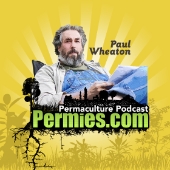
 2
2
 1
1





 6
6




Idle dreamer




We can green the world through random acts of planting.





 1
1





I don't know what would be the best to do as far as food crops go, but I'd also like to include a few patches of butterfly-and-bee attractors, as I'd like to have a hive (on my property) in the future and would love to have some extra flowers for pollination. Was thinking some kind of guild diversity here.
http://imgur.com/a/kh0o1 - Not smart enough to figure out how to properly post images
"...specialization is for insects." - Lazarus Long
Universal Introduction to Permies
How Permies.com works
 3
3




Idle dreamer
 1
1




 1
1




 1
1




 1
1




Namaste - the light in me, honours the light in you!!
 4
4




Augustus Clark wrote:The land is owned by a conservation trust, which gives the public the right to cross the land and engage in "passive recreation" like bird watching or photography. I live nearby and don't think anyone would mind if I enhanced the land with some plant species that are useful to humans. The last people that lived in my house used to lawnmow the area behind their house; I think this is a better use of the land.
Invasive plants are Earth's way of insisting we notice her medicines. Stephen Herrod Buhner
Everyone learns what works by learning what doesn't work. Stephen Herrod Buhner
 4
4




 3
3




Steven Kovacs wrote:As Anne said, try volunteering with the trust and seeing if your goals and theirs converge. If so, great! If not, don't mess with their land. It's not yours, and it's not abandoned - the trust has the right to manage it without your interference. How would you feel if someone started planting something on your land that you didn't want, just because they thought they knew better than you how to use the land?
Maybe it would be a good idea to volunteer to help the Conservation Trust. Get to know what their mission is and to help them with their plans.
It would be a prudent to ask their permission before digging holes to put plants in.
 3
3




Tyler Ludens wrote:I personally feel it is not in the spirit of permaculture to cultivate land which has been set aside as conservation land. To me, conservation land is Mollison Zone 5. There is so much land in the world which needs care and restoration, and so little land set aside as conservation land.
https://permies.com/t/56225/permaculture-design/Mollison-Permaculture-Zones-happened-Zone
http://www.popcliq.com (web development), GoPermaculture Food Forest http://www.permies.com/t/57687/forest-garden/Permaculture-Food-Forest-suburban-permaculture, Sea Buckthorn (Seaberry) grower (hobbiest) https://www.facebook.com/michelle.bisson.37, zone 3b/4b (borderline) Quebec Canada

|
"I know this defies the law of gravity... but I never studied law." -B. Bunny Defiant tiny ad:
Support permies and give beautiful gifts to gardeners: permaculture playing cards.
https://gardener-gift.com/
|






